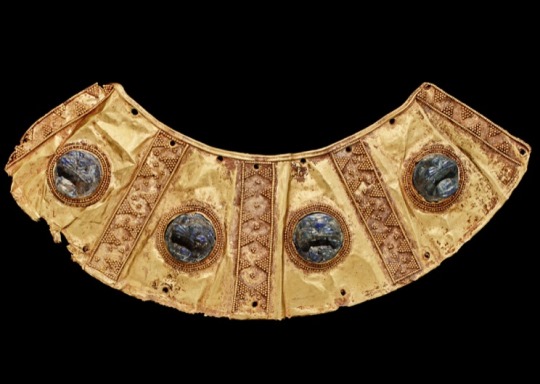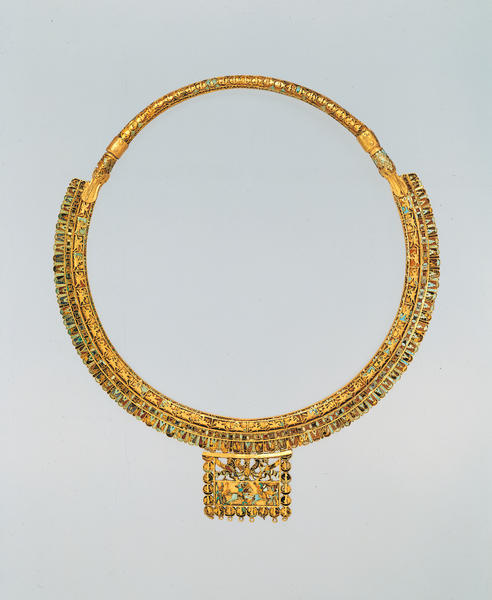#AN ACHAEMENID GOLD AND LAPIS LAZULI PECTORAL
Explore tagged Tumblr posts
Photo


AN ACHAEMENID GOLD AND LAPIS LAZULI PECTORAL CIRCA 5TH-4TH CENTURY B.C. 8 1⁄2 in. (21.5 cm.) long.
The pectoral is formed of hammered sheet with perforations along the edges for attachment. The crescentic arc is divided into four sections by thin columns each framed with beaded wire enclosing triangles of granulation and small granulated clusters. Centering each panel is a lapis lazuli lion head protome, each with its mouth open revealing fangs, secured by a collar encircled by rings of granulation on either side of a filigree wire.
The crescentic form suggests that this was originally attached to leather or cloth to be worn as a pectoral, but it is equally possible that it served instead as furniture or architectural ornament.
#AN ACHAEMENID GOLD AND LAPIS LAZULI PECTORAL#CIRCA 5TH-4TH CENTURY B.C.#gold#ancient gold jewelry#ancient artifacts#history#history news#ancient history#ancient culture#ancient civilizations
159 notes
·
View notes
Text


Gold pectoral inlaid with turquoise, lapis lazuli, glass, and carnelian, Achaemenid Empire, 6th-4th century BC
from The Miho Museum, Kyoto
939 notes
·
View notes
Text
RT @LloydLlewJ: Gold & lapis lazuli: Achaemenid lapis slab depicting a winged bull; Achaemenid gold bracelet with lapis lion head finials; Sasanian gold pectoral with lapis inlays showing the head of a Shah and lion heads. Reza Abbasi Museum, Tehran #Iran #Persia https://t.co/sKKRoot0qy
Gold & lapis lazuli: Achaemenid lapis slab depicting a winged bull; Achaemenid gold bracelet with lapis lion head finials; Sasanian gold pectoral with lapis inlays showing the head of a Shah and lion heads. Reza Abbasi Museum, Tehran #Iran #Persia pic.twitter.com/sKKRoot0qy
— Professor Lloyd Llewellyn-Jones (@LloydLlewJ) August 19, 2019
from Twitter https://twitter.com/iranologyscty August 21, 2019 at 03:28PM via IFTTT
0 notes